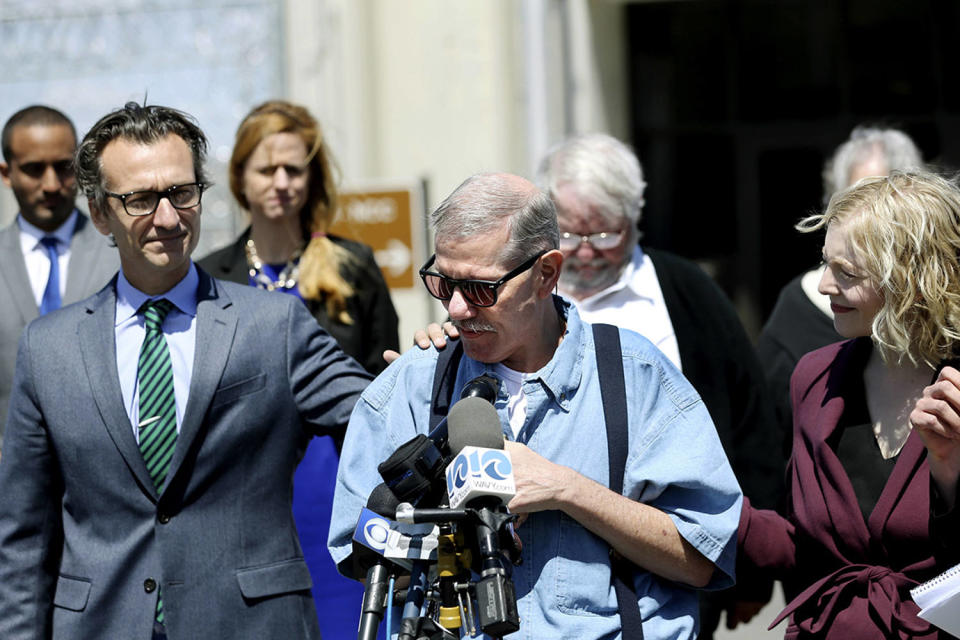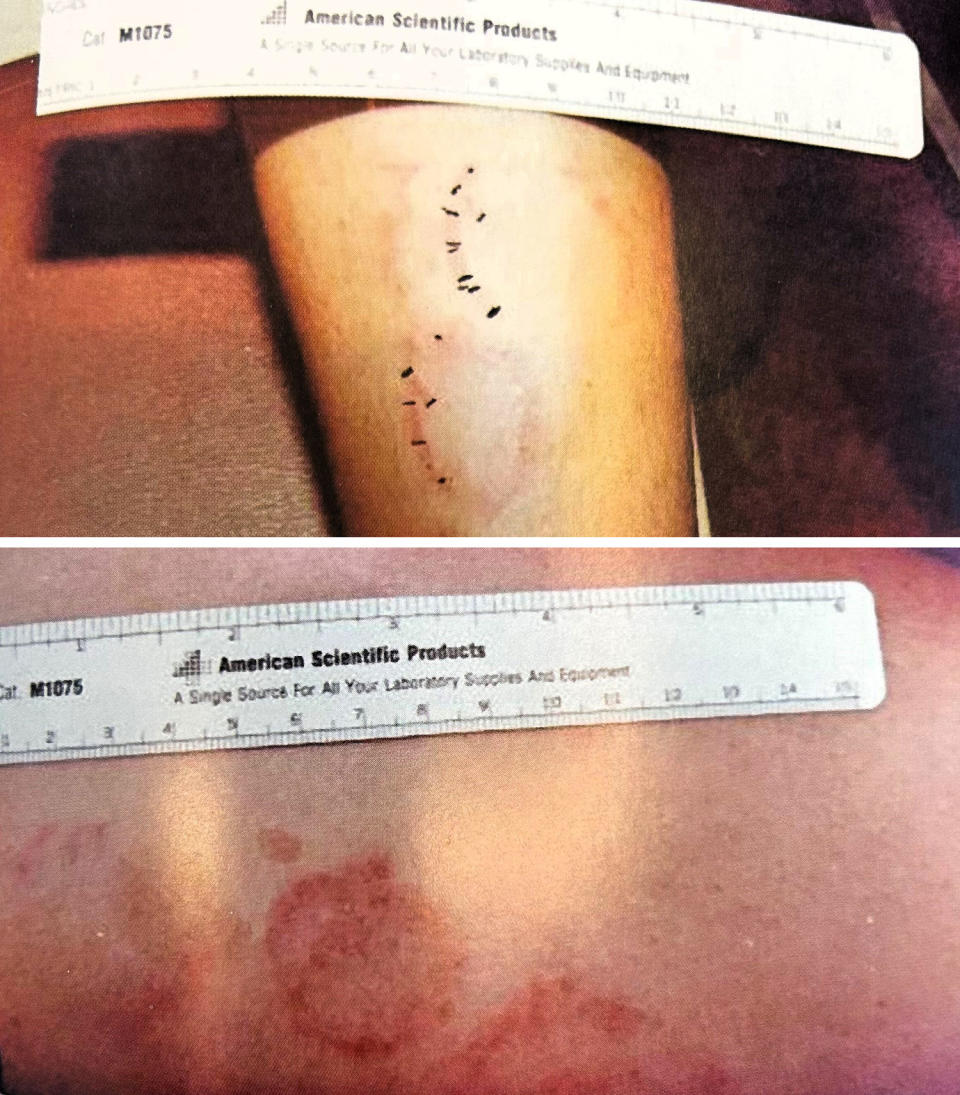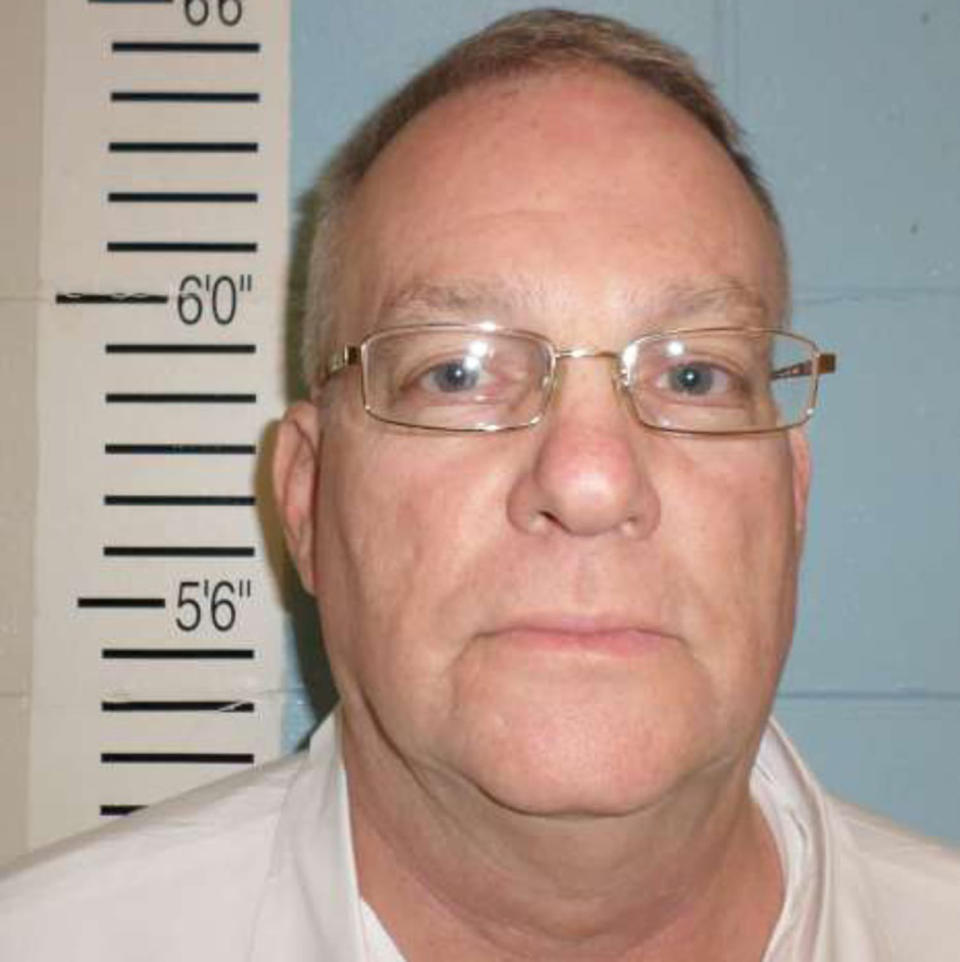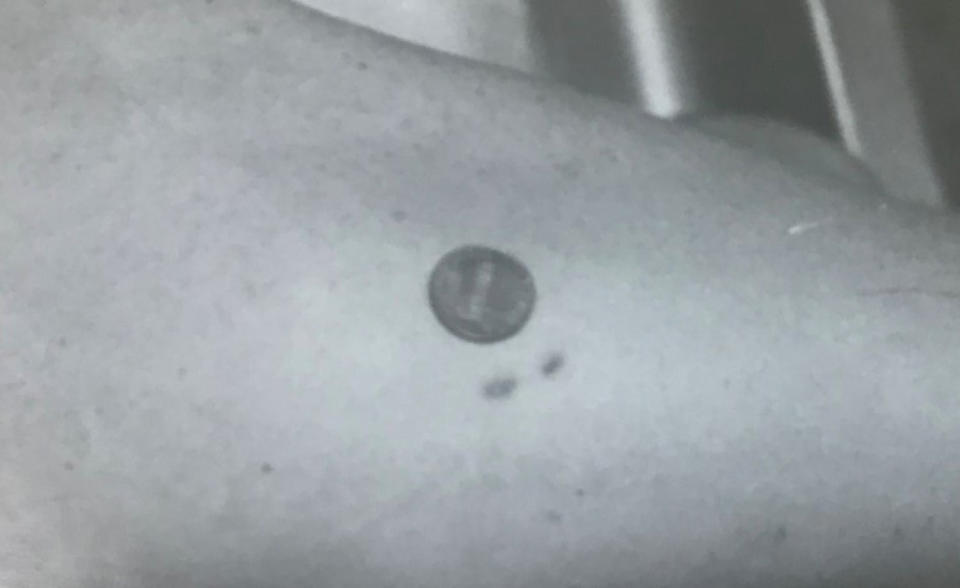Even now, as a free man, Keith Harward finds it difficult to explain what it was like to sit in a courtroom, being tried for a rape and murder he knew he did not commit, watching someone considered an expert testify with certainty about that bite. . The marks on the victim’s leg matched his teeth.
“To this day I still wonder what the hell happened,” he told NBC News at his home in North Carolina. “Sometimes I break down and cry because I can’t explain it to you or anyone other than people who have been in my situation.”
There is no evidence connecting Harward to the horrific 1982 crime, but it turned out that he was among a group of sailors on a Navy ship in dry dock in Newport News, Virginia, who were asked to give dental impressions, as The attacker was wearing a Navy uniform. . Two forensic dentists told two separate juries that Harward’s teeth matched “with scientific certainty” a bite mark on the rape victim’s skin. Harward spent 33 years in prison until, with the help of the Innocence Project, he was exonerated in 2016 thanks to DNA evidence that pointed to another sailor as the killer.

The Innocence Project says Harward is among at least 36 people who have been exonerated after being wrongfully convicted based on now-debunked bite mark comparisons. One of them, Eddie Lee Howard, was on death row in Mississippi when he was released in 2021 after he compared DNA from the crime scene to that of another person.
Four different government scientific bodies have concluded that bite mark analysis has no scientific basis. That includes the Presidential Council of Advisors on Science and Technology, which said in 2016 that “the available scientific evidence strongly suggests that examiners not only cannot identify the source of the bite mark with reasonable accuracy, but they cannot even contact “consistently agree on whether a lesion is a human bite mark.” .” The National Institute of Standards and Technology, the gold standard of measurement science, said in 2022 that forensic analysis of bite marks “lacks sufficient scientific basis” because “human dental patterns have not been shown to be unique.” at the individual level.”
A 2016 study found that self-proclaimed experts couldn’t distinguish between human and animal bite marks. Others have documented how marks on human skin change over time through healing or decomposition.
“People who were board certified didn’t agree on what a bite mark was,” said Adam Freeman, a forensic dentist who once “drank the Kool-Aid” of bite mark analysis but has since He has become one of his biggest critics within the profession. “If a science is not a science, is not reproducible, and is not reliable, courts should not allow it, period.”


However, bite mark analysis has been used in thousands of cases. And although defense lawyers have challenged it with increasing success, no court has declared it inadmissible.
“There are still a lot of people, and we don’t even know how many, in jails because of bite mark testimonies,” Freeman said. “It’s really horrible that it’s still allowed to be used in court, where these are issues of life and liberty.”
Chris Fabricant, an attorney with the Innocence Project and author of “Junk Science and the American Criminal Justice System,” said his team has consistently blocked the introduction of bite mark evidence in courts across the country, even as it continues to seek exoneration of imprisoned defendants. based on discredited discipline. But he said none of the forensic dentists who testified based on now-discredited methods have been held accountable.
“My feeling of outrage is what gets me out of bed every day,” he said.
Freeman said, “I can tell you that literally thousands of human years have been spent in prison” based on erroneous testimony.


There is no data to show how often bite marks have been used in prosecutions. Anecdotal evidence suggests that the number has decreased dramatically, but that prosecutors still sometimes try to introduce bite marks into the trial.
The professional associations of forensic odontologists responded to the NIST report by saying that, while they agree with “many details” in the report and “are aware of the problems related to bite marks and recognize past concerns,” NIST’s rejection of the evidence of bite marks is too broad.
“Critics continue to overlook the advances made…by forensic odontology in addressing these concerns. It is crucial to reiterate that cases in which dentists misidentified bite perpetrators occurred in the 1980s and 1990s. Dentists today do not adhere to the standards in place during that era, but we continue to be judged by them.”
“It’s an unpleasant place”
Charles McCrory is serving 38 years behind bars, convicted of killing his wife. The bite mark expert in his case recanted his testimony, saying he now knows he cannot say whether the bite mark on the victim matched McCrory’s teeth. However, Alabama courts have refused to release McCrory.


The Alabama Court of Criminal Appeals ruled earlier this year that the jury was capable of deciding on its own whether the bite marks matched, a finding that ignores science suggesting that such perceived visual matches cannot be valid. The court also cited other evidence in the case, including a witness who said he saw McCrory’s truck at the house during the time of the murder. No physical or forensic evidence links him to the crime.
Three years ago, after bite mark evidence in his case fell apart, McCrory was offered a deal: plead guilty and walk free. He said no.
“I refused to accept it because I didn’t kill her,” McCrory told NBC News from his prison. “I didn’t kill my wife.”


The Innocence Project is now pursuing appeals in federal courts.
“Prison is hard; a lot of the stories you see in the news about prisons, particularly those in Alabama, are true,” McCrory said. “It’s a nasty place and it’s not a place I would wish on anyone.”
“I’m not losing hope,” he said. “And certainly there are days of disappointment and days where you’re down and out… but I just believe that somewhere there’s a truth in this that will come out, and you can’t give up. “That is simply not an option.”
Harward, released in 2016, is living proof that a second act is possible after decades of being unjustly locked away. Virginia, who was awarded $1 million in compensation, lives quietly in rural North Carolina, taking occasional RV trips with her girlfriend and thinking about smartphones and social media.
But he also goes on to talk about the evidence of bite marks, which robbed him of half his life and prevented him from attending his parents’ funerals.
“It’s rubbish. It’s rubbish. It doesn’t mean anything,” she stated.
A few years ago, he traveled to a conference of forensic dentists in New Orleans to confront them about bite marks. Many were sympathetic, she said, but there is an old guard clinging to the past.
“How many times do they have to tell you that you are wrong before you give up?” he said.
This article was originally published on NBCNews.com